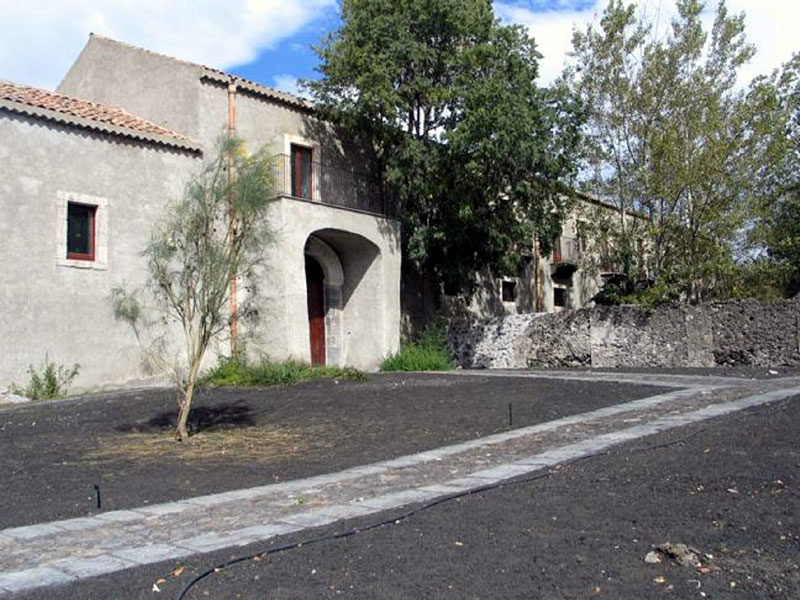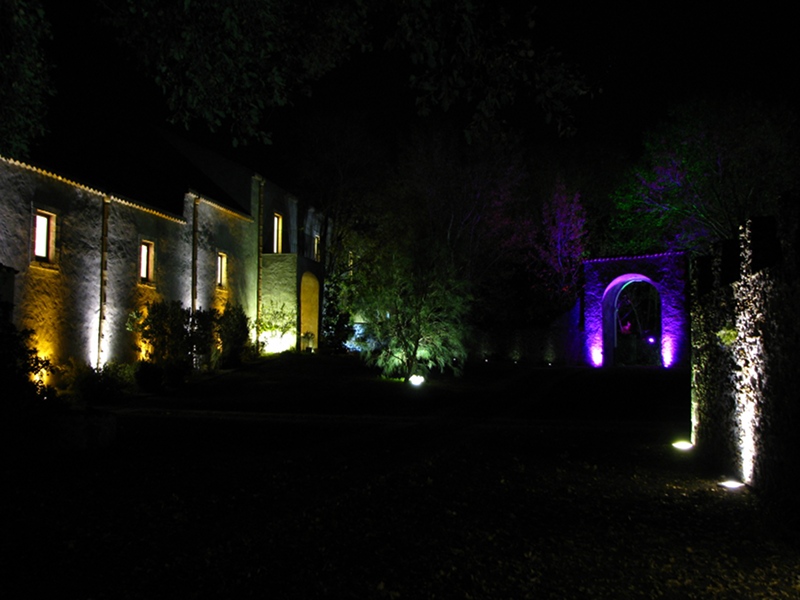The Monastery Housing the Park Head Offices
In spring 2005, Etna Park Authority inaugurated its new head offices in the former Benedictine Monastery of San Nicolò La Rena, ancient building of great historical and architectural value around which the community of Nicolosi was born and developed.
The Monastery, recovered after years of abandonment thanks to difficult works of preservation, represents for the people of Etna and for the visitors coming from all over the world a place of culture, nature, and promotion of local products. It also represents an essential reference point housing important cultural and scientific events and environmental education initiatives. Among them, the 6th National Congress of the Italian Federation of Parks and Nature Reserves (Federparchi), held in 2006 and welcoming all the protected areas of our Country. Beyond the entrance palace, built ex novo with the function of "front office" of the Park Authority, the ancient path in lava stone and a fascinating arch lead to the area in front of the Monastery, characterized by the presence of the "four mouth" reservoir, still working with its four wells. On the ground floor, probably the ancient cellar of the Monastery, you will find a volcanological museum illustrating the main features of Etna: its geological history, the caves, the lava flows, the "volcanic bombs". In front of it, the reconstruction of the rural world of Etna. Moreover, the same premises house the library and the data elaboration center. Always on the ground floor, in another section, there is the Park conference hall, where the old church used to be. It preserves some frescos and inscriptions surviving the long period of decay before the renovation works. On the upper floor, the "cells" of the Benedictine monks house almost all the Park Authority offices.
Behind the building, you will find the enclosure with the ruins of the original Monastery and, next to it, the old millstone, today still closed but bound to become the Museum of wine-growing of Etna. Finally, next to the head offices, there is the large area (about three hectares) with the collection field of the Germplasm Bank of Etna and the Trail of the Germplasm.
Near the main building there is a digital seismic station and a station for the chemical survey of gases, installed by the Park Authority within the agreement with the National Institute for Geophysics and Volcanology.
The whole Monastery area is now accessible for people with disabilities, for visually impaired people, and for blind people.








